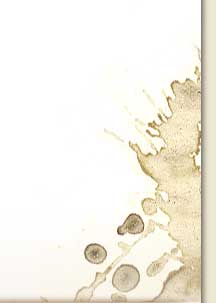 A NEW KING TAKES OVER from the old Queen and a new political leader replaces the previous played-out office-holder.
A NEW KING TAKES OVER from the old Queen and a new political leader replaces the previous played-out office-holder.
That new title, King Charles III, is a challenge for newsrooms everywhere to get accustomed to. TV commentators this past week were still calling him ‘the Prince’ and instantly correcting themselves, hours and even days after he had assumed the topmost position. New habits do get instilled, though, and the updated moniker will be tripping comfortably off everybody’s lips before too long. How Charles himself will adjust to the new role is inevitably unclear, but he and his chief courtiers in ‘The Firm’ know full well that a lot depends on what new relationship he strikes with the media.
The king and his late wife Princess Diana enjoyed, if that’s the word, a checkered history with the press, an experience which for him remained deeply formative. The camps of both aggrieved royals vied with each other in the media for years, cultivating opinion-formers, leaking information tactically, and trashing their opponents mercilessly. She seemed rather better at it than he did.
Eighteen years after Diana’s horrible car-crash death, being chased by a hounding pack of paparazzi, Charles fully crystallized his approach to the media when he attempted to formalize his control over them. At the time it was dubbed a “North Korea-style” effort at censorship, and consisted of a 15-page contract that broadcasters were obliged to sign whenever they interviewed the then-prince. His office claimed the right to halt a broadcast if they didn’t like it. The move was thankfully defeated. The UK’s national Channel Four News responded to the challenge by canceling a princely interview on Charles’ favorite topic, which was to be recorded at the British embassy during the 2015 Paris Climate Summit.

Perhaps the most abiding area of concern about the prince vs the principle of public transparency was the long-lasting affair of the “Black Spider Memos.” These were Charles’ decades-long attempts, written out in scrawly handwriting (right), to exercise influence with government departments over the many subjects that activated him, ranging from climate change to homeopathic medicine, housing policy and the quality of hospital food. It took the Guardian, which had obtained copies of his messages, ten years of legal action to finally win the right to publish them in full.
In the run-up to his accession Charles and his now-Queen Consort, the former Camilla Parker-Bowles, decided to pick a former deputy editor of the Daily Mail to be their press guru. The Mail has often been called the “respectable” tabloid among Britain’s sensationalist dailies. More accurately, I would say, it functions as the country’s middle-class tabloid. It remains to be seen just how tabloidish the new King might look in future media appearances.
THE NEW PRIME MINISTER has also had a hard time relating to the press. As formerly the Foreign Secretary, Liz Truss (top center) claimed the British media were trying to “talk our country down.” She was bound to trade in such anti-media prejudice; it’s a staple among the only electorate she needed when running for the top job: paid-up members of the Conservative Party.
She has now chosen an intriguing strategy for her media relations, slicing a sudden division between publicity for government announcements on the one hand (under a longtime civil service spin-merchant, Simon McGee) and on the other hand the cut-and-thrust of party political jousting under Adam Jones, who learned his craft as a shill for the banking industry. This splitting of roles won’t help Truss, according to the traditionally anonymous Downing Street sources who told the Guardian‘s politics team that both McGhee and Jones “will have their work cut out.” They emphasized that the new premier wholly lacks her predecessor Boris Johnson’s “emotional connectivity and gut instinct when speaking to the wider public.”
ACROSS THE ATLANTIC we too have, at least according to many American media, a new leader. Joe Biden (top right) is being painted as an entirely changed president. OUT with all remaining traces of the soft grandfatherly approach, we are told, and IN with the red-in-tooth-and-claw political fighter.
Even allowing for some journalistic license to exaggerate, it’s clear enough that the president has indeed fully entered the Mid-terms season, determined to fight his case and to push his Democratic Party into a better Congressional position if that’s at all possible. Even the Associated Press, which can often strain hard to be extra-careful with its language, described the new development in punchy terms: “a gloves-off, no-holds-barred approach from Biden.”
Can it work? Already the media are marking up some perhaps surprising gains. NBC News seemed positively enthusiastic in its headline “Democrats get another poll indicating an improving mid-term landscape.“
But the media can be confused, or at least confusing in their assessments of Biden’s new tactics and their effect. New York magazine, while calling Biden’s dramatic anti-MAGA speech a “blistering prime-time address,” felt it necessary to provide us with a guide to the “intense debate” it has engendered across the nation. The magazine critiqued the Washington Post‘s editorial board for complaining that Biden-inspired “partisanship” is replacing the preferable attribute of “patriotism,” as if somehow they are opposites. The Post‘s opinion as actually expressed was:
“You don’t persuade people by scolding or demeaning them, but that’s how the president’s speech landed for many conservatives of goodwill.”
Whether the Democrats’ new campaigning tactics between now and November 8th could ever woo ‘conservatives of good will‘ is a highly uncertain contention. But there are just forty-seven days now in which to find out if it’s true.
